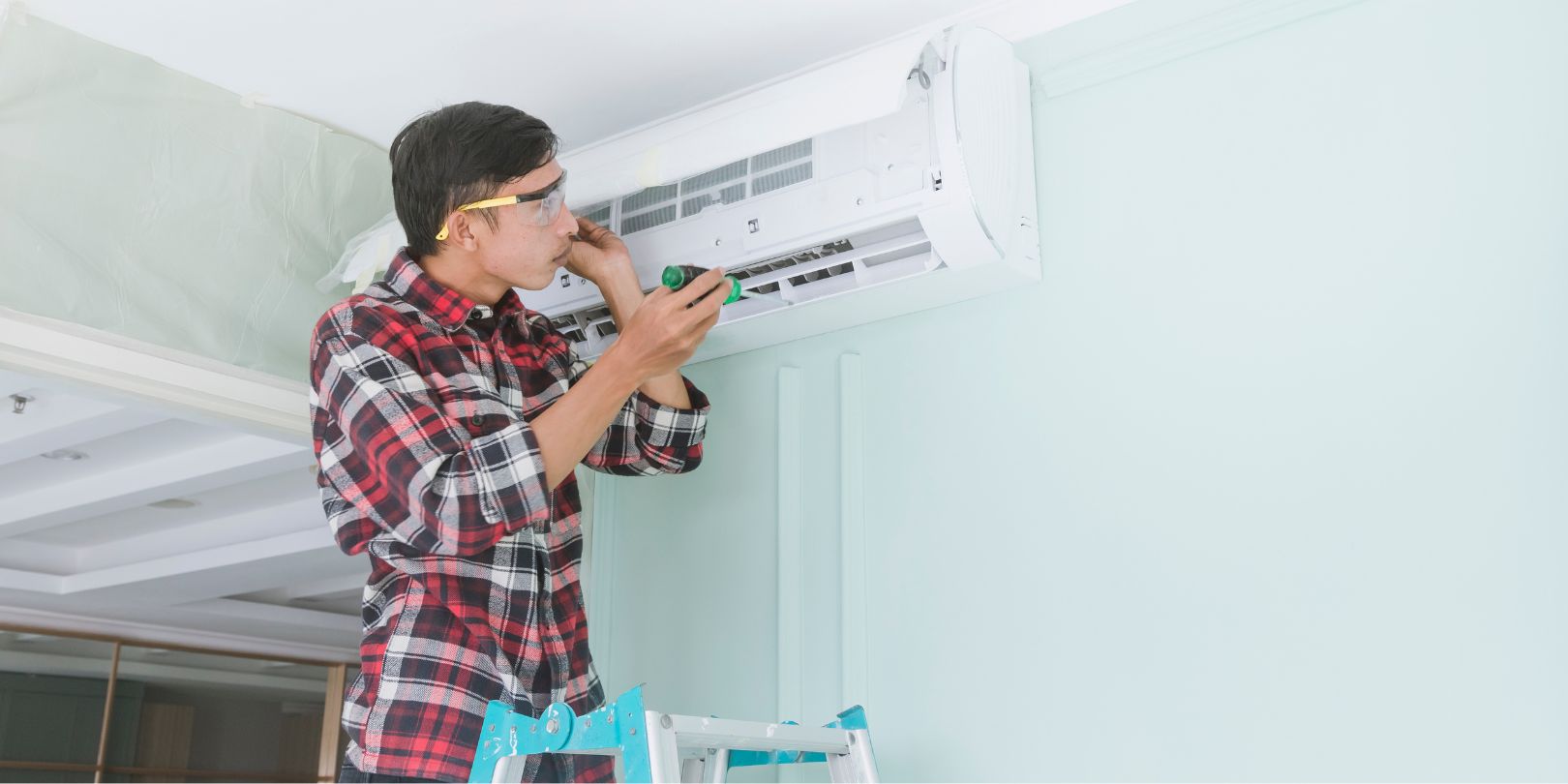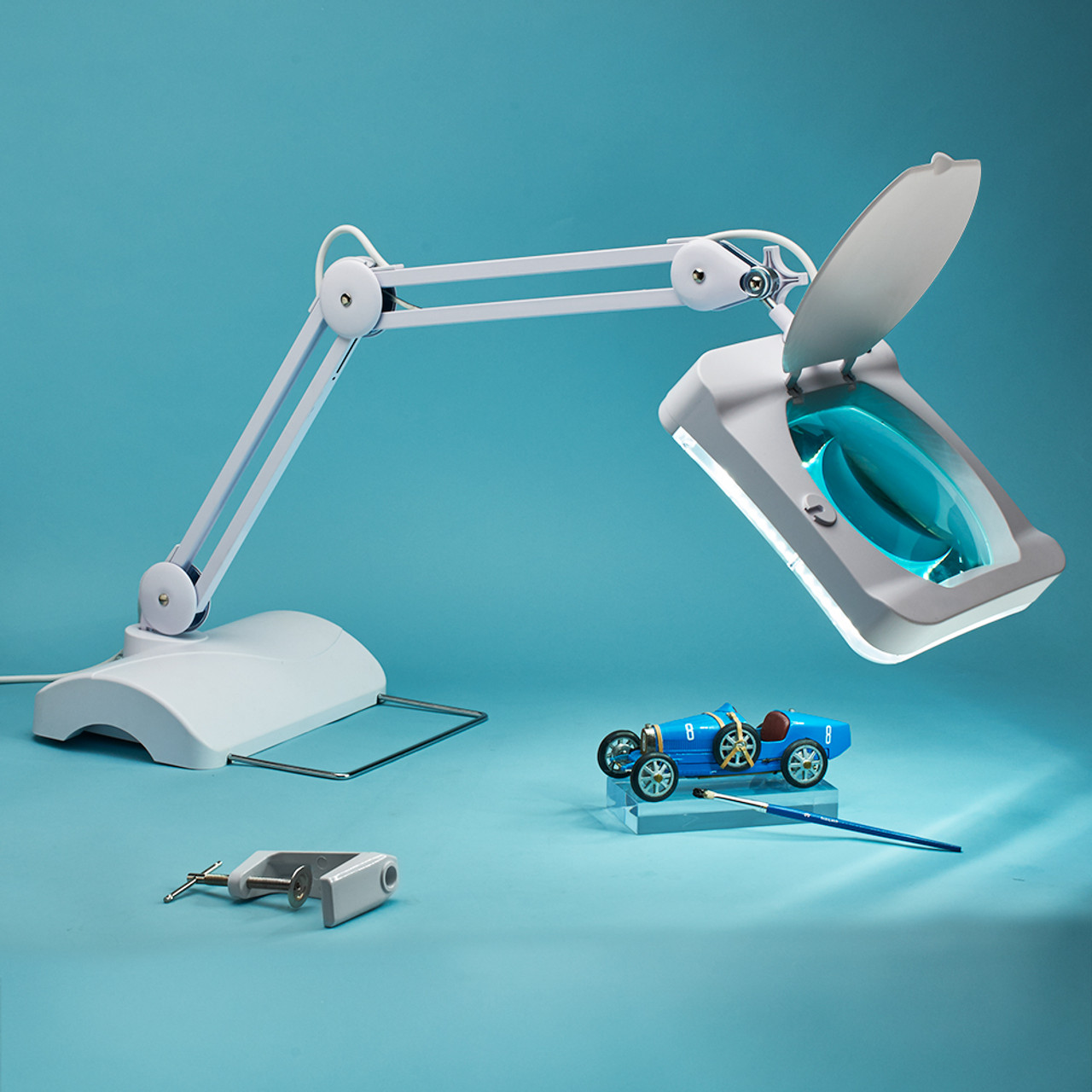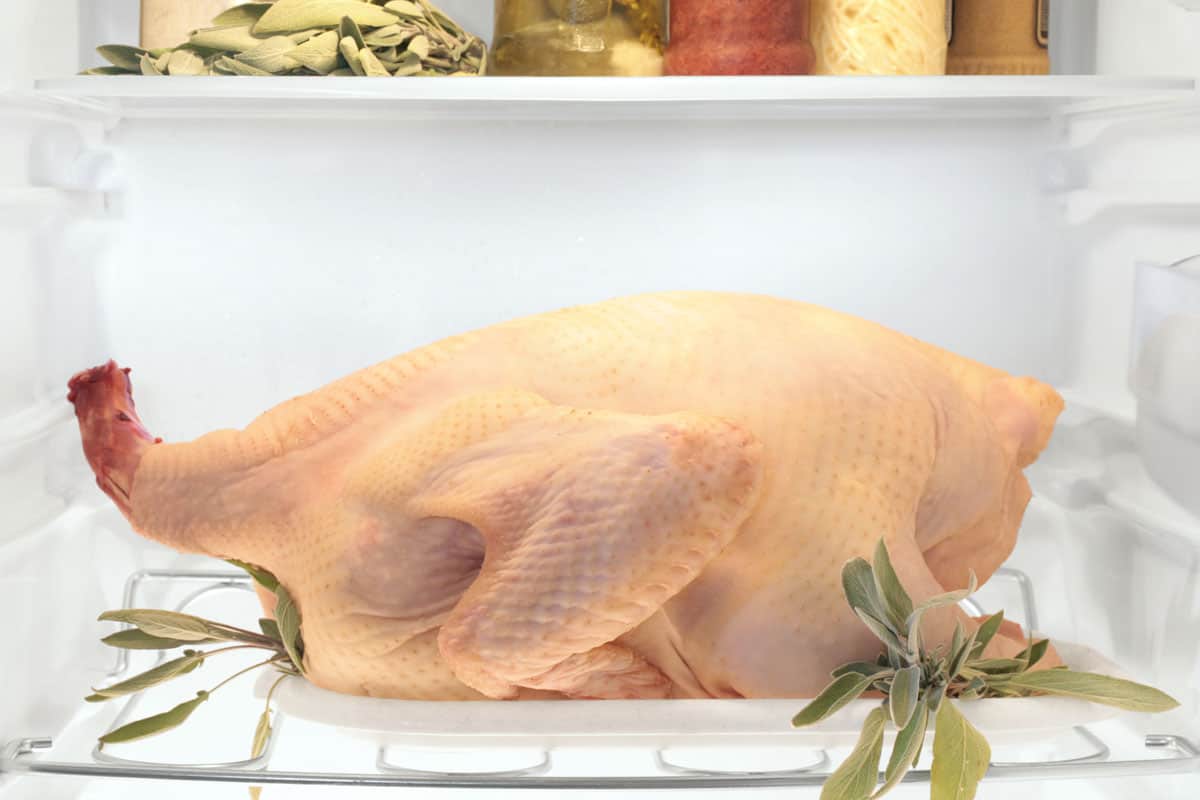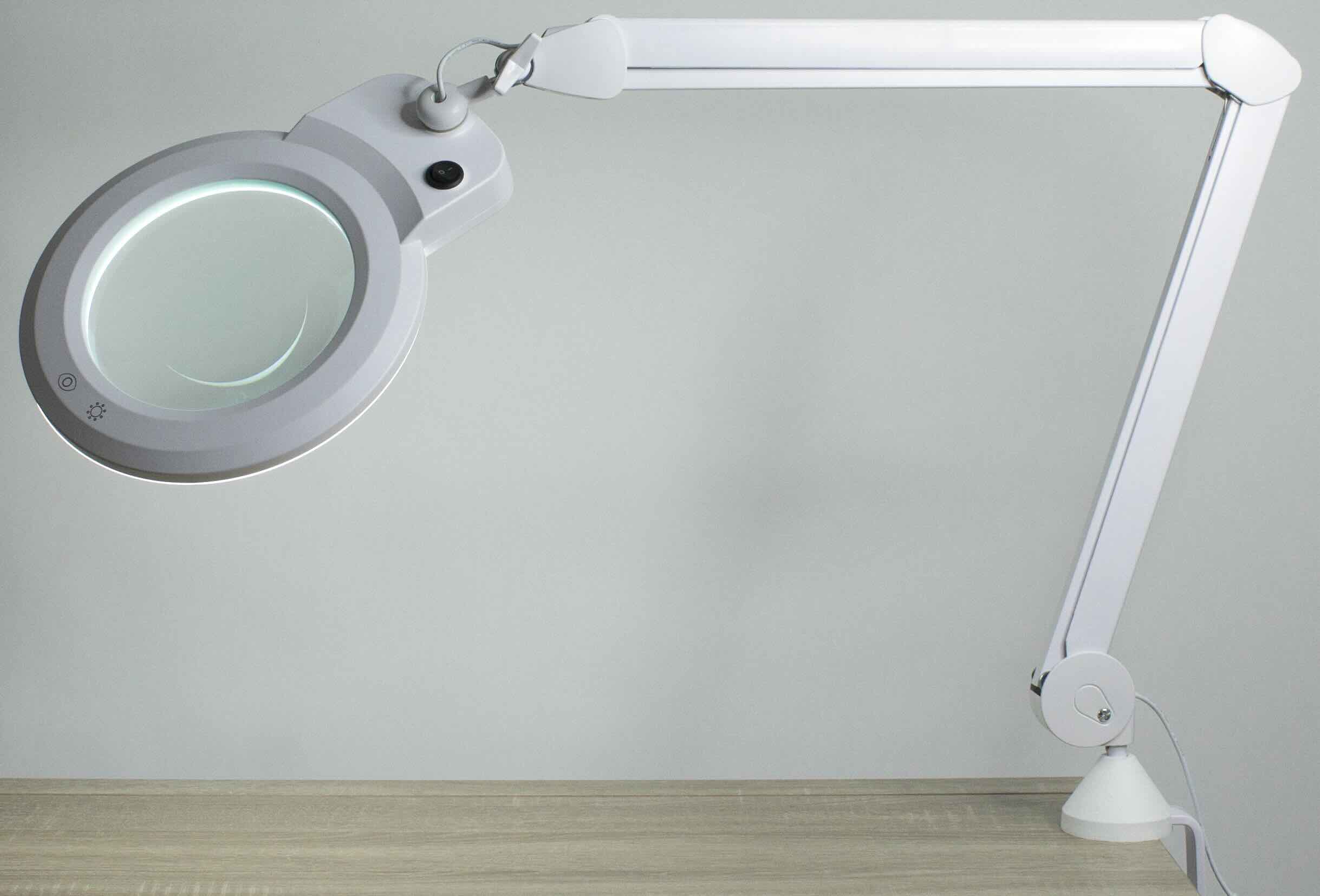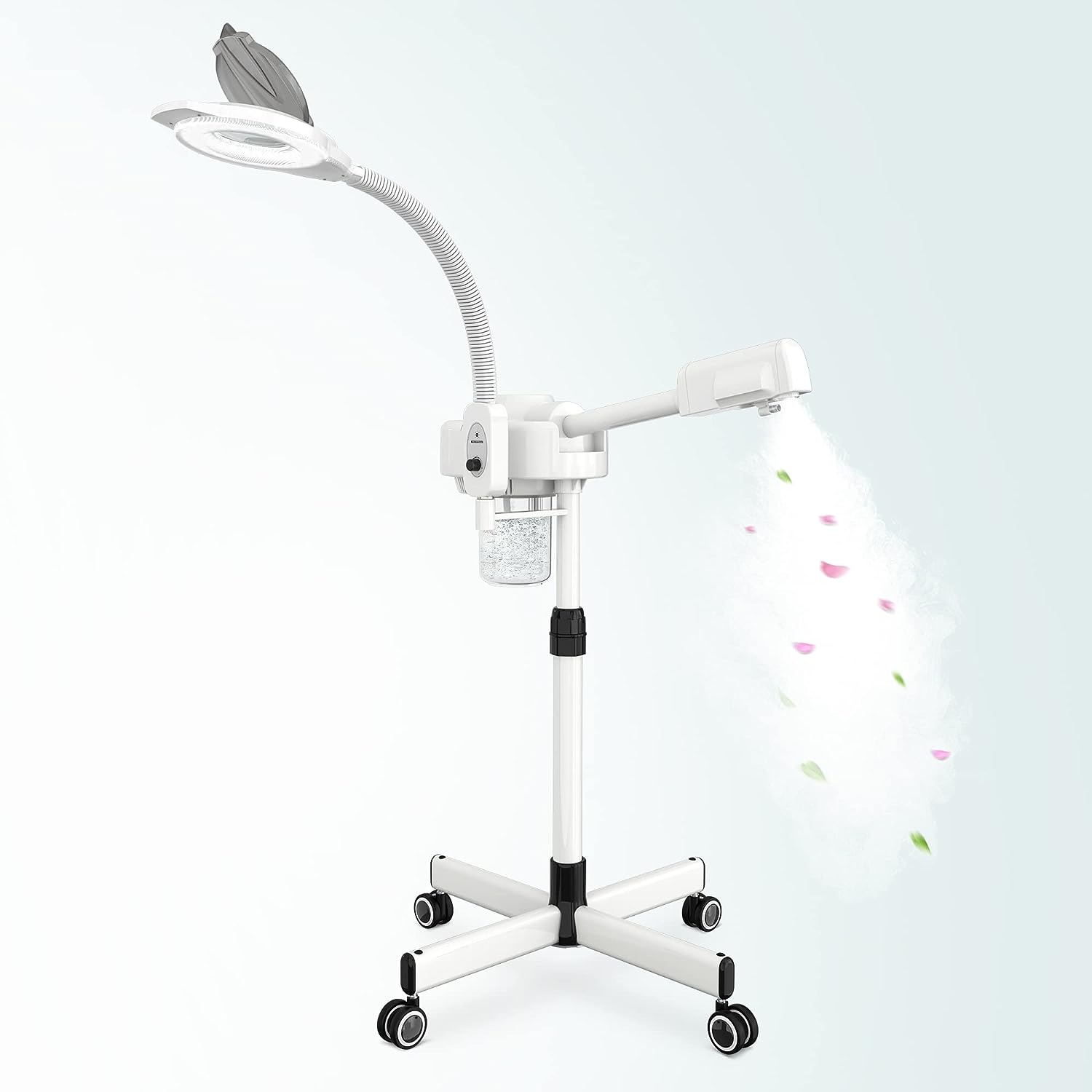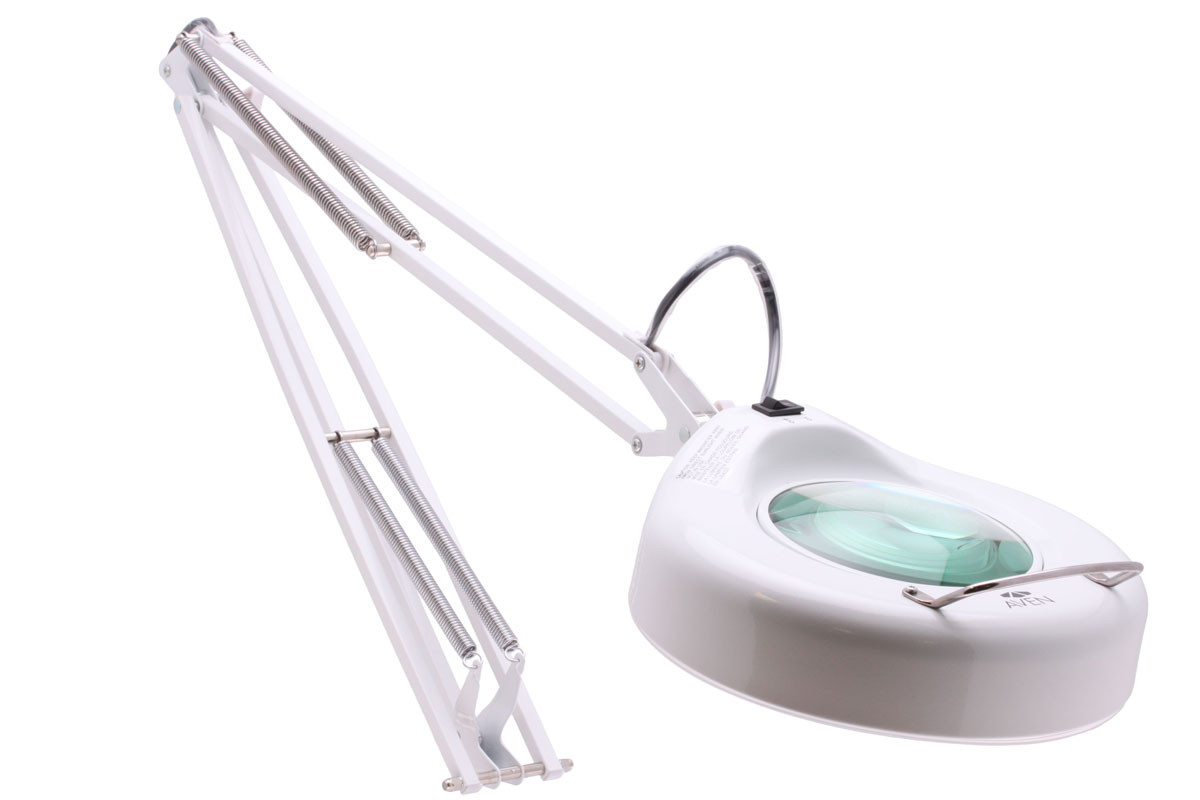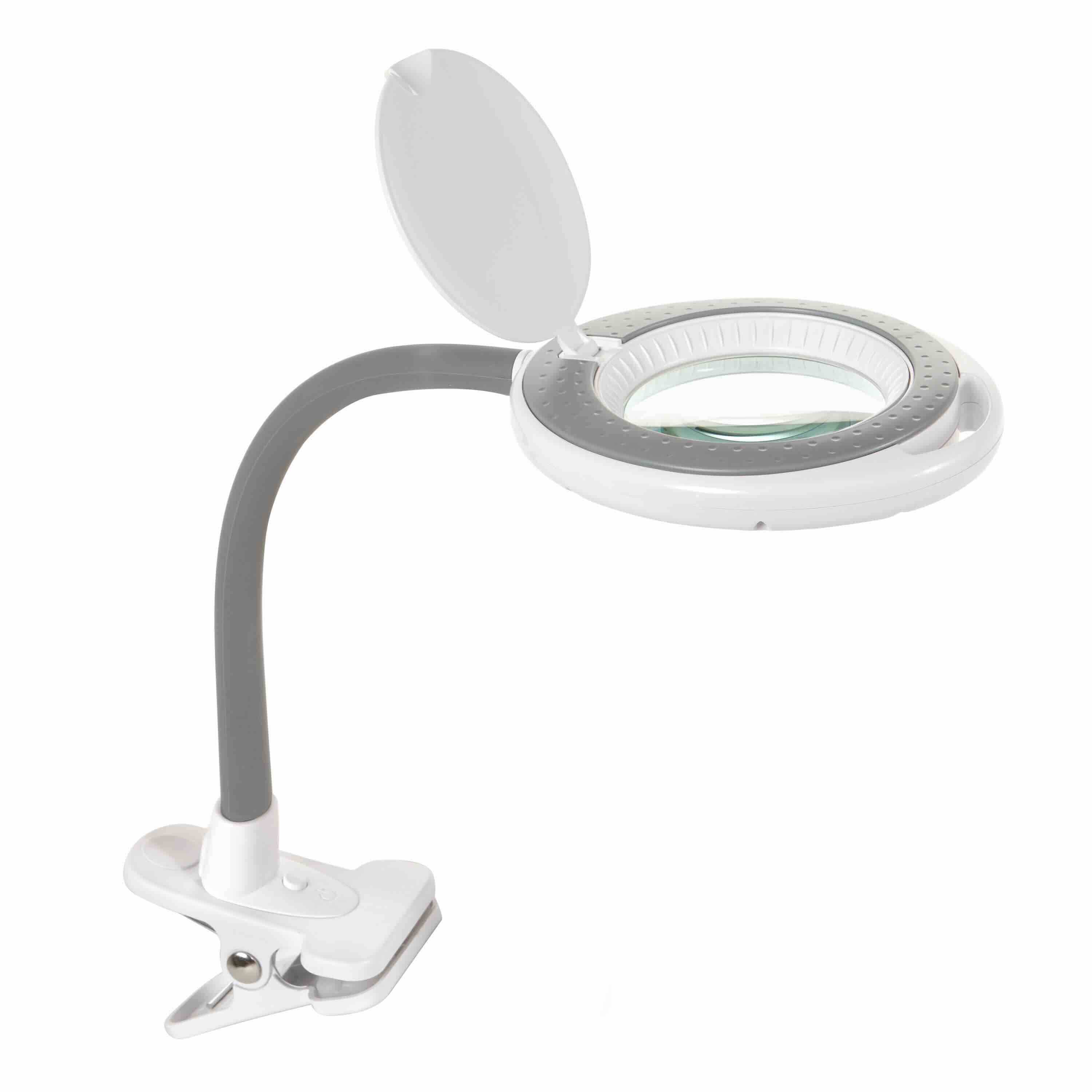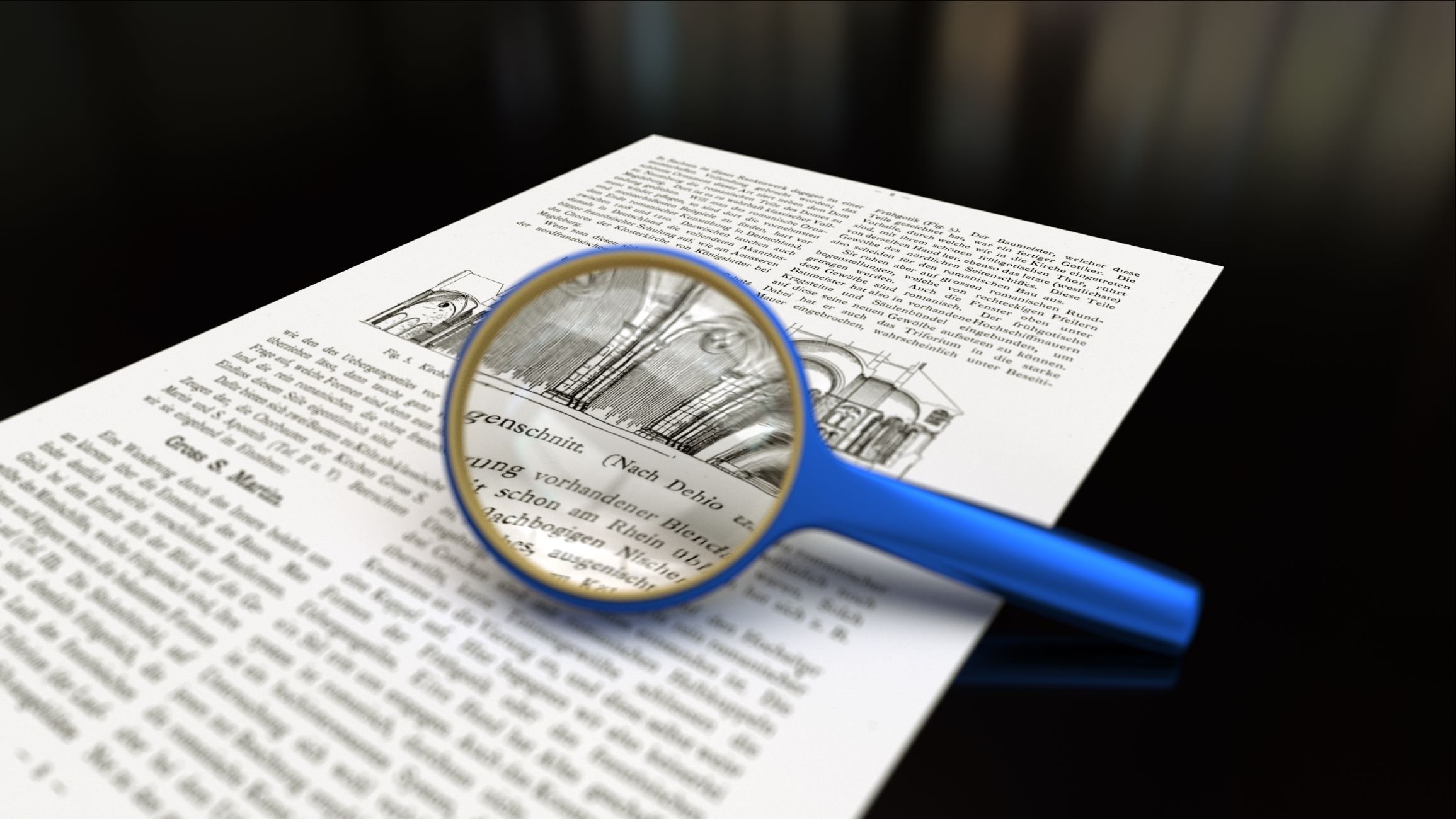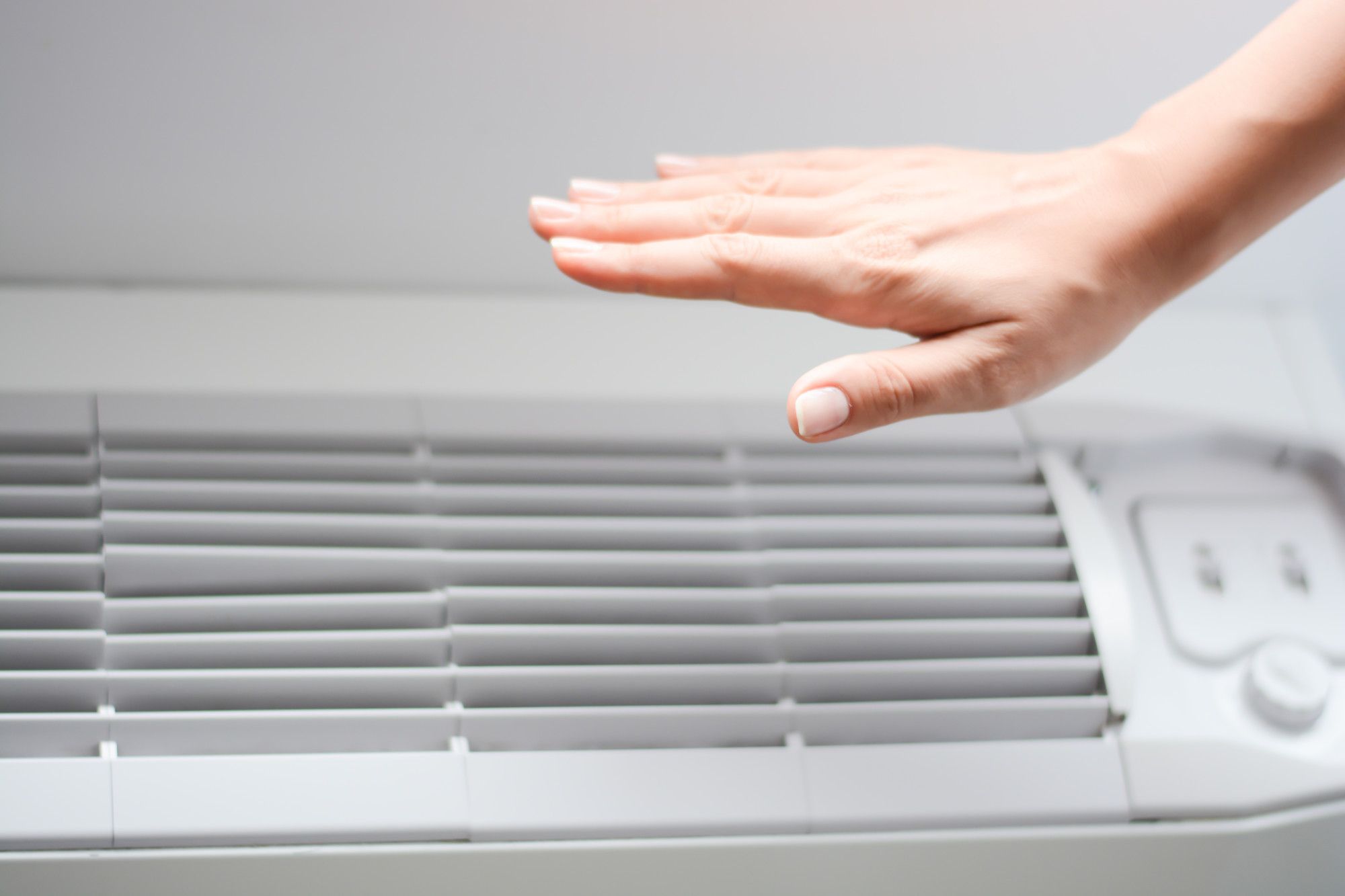Home>Furniture>When Should You Loosen The Adjustment Knobs On Your Magnifying Lamp?
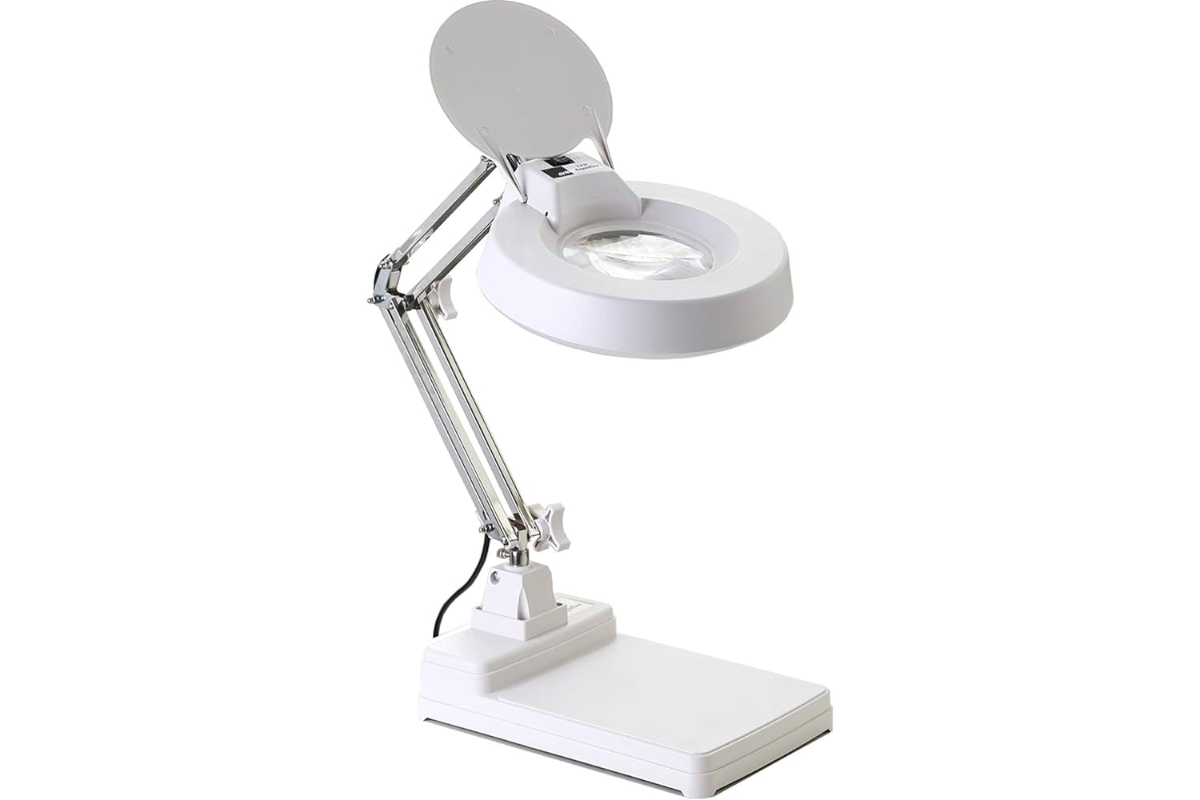

Furniture
When Should You Loosen The Adjustment Knobs On Your Magnifying Lamp?
Modified: January 19, 2024
Discover the best time to loosen the adjustment knobs on your magnifying lamp for optimal furniture inspection and repairs. Find out more now!
(Many of the links in this article redirect to a specific reviewed product. Your purchase of these products through affiliate links helps to generate commission for Storables.com, at no extra cost. Learn more)
Introduction
When it comes to using a magnifying lamp, proper adjustment is key to ensure optimal comfort and effectiveness. One essential feature of a magnifying lamp is the adjustment knobs, which allow you to customize the position and angle of the magnifying lens and light source.
Understanding how and when to use the adjustment knobs on a magnifying lamp is crucial to getting the most out of your device. In this article, we will explore the benefits of loosening the adjustment knobs, the situations that require adjustments, and how to properly loosen the knobs to achieve the desired results.
Whether you are a professional in the beauty industry or an avid hobbyist, having a well-adjusted magnifying lamp can significantly improve your productivity and overall performance. So, let’s dive in and explore the fascinating world of magnifying lamp adjustment knobs!
Key Takeaways:
- Properly loosening the adjustment knobs on your magnifying lamp can enhance flexibility, reduce eye strain, and improve comfort, ultimately boosting productivity and performance in various tasks.
- Understanding the situations that require loosening the adjustment knobs and the potential risks involved is crucial for maximizing the benefits of a magnifying lamp while maintaining its integrity and functionality.
Understanding the Magnifying Lamp Adjustment Knobs
The adjustment knobs on a magnifying lamp are designed to give you control over the position and angle of the magnifying lens and light source. These knobs are typically located on the sides or at the base of the lamp and can be easily adjusted to meet your specific needs.
Most magnifying lamps have two main adjustment knobs: one for adjusting the position of the lamp head and the other for tilting the magnifying lens. The position adjustment knob allows you to move the lamp head up and down or side to side, while the tilt adjustment knob allows you to angle the magnifying lens towards your desired focus area.
It is important to understand that the proper positioning of the magnifying lamp can greatly impact your comfort and efficiency. By adjusting the lamp head and magnifying lens to the correct position, you can reduce eye strain, minimize neck and back discomfort, and achieve the optimal magnification for your specific task.
Additionally, some magnifying lamps may also feature a brightness adjustment knob, which allows you to control the intensity of the light source. This feature is particularly useful when working on tasks that require different lighting conditions, such as intricate crafts or detailed beauty treatments.
Overall, the adjustment knobs on a magnifying lamp provide you with the flexibility to customize the lamp’s position, angle, and lighting to suit your individual preferences and work requirements. Now that we have a good understanding of the purpose of these knobs, let’s explore the benefits of loosening the adjustment knobs.
Benefits of Loosening the Adjustment Knobs
Loosening the adjustment knobs on your magnifying lamp can offer several benefits that enhance your overall experience and productivity. Let’s take a closer look at some of these benefits:
- Improved Flexibility: Loosening the adjustment knobs allows for greater flexibility in positioning and angling the magnifying lens and light source. This flexibility enables you to find the most comfortable and suitable position for your specific task. Whether you need to move the lamp closer to your work surface, adjust the angle of the lens to focus on intricate details, or tilt the lamp to eliminate glare, loosening the adjustment knobs gives you the freedom to make these adjustments easily.
- Reduced Eye Strain: By properly positioning the magnifying lamp, you can minimize eye strain and fatigue. Loosening the adjustment knobs allows you to position the magnifying lens at the optimal distance from your work surface, ensuring that you can comfortably view your task without straining your eyes. This is particularly important when performing tasks that require prolonged concentration, such as reading small text or working on intricate designs.
- Enhanced Comfort: Another significant benefit of loosening the adjustment knobs is the improved comfort it provides. By adjusting the angle and position of the magnifying lens, you can find a comfortable working posture that minimizes strain on your neck and back. This is especially beneficial for individuals who spend long hours using a magnifying lamp, such as professionals in the beauty industry, artists, or hobbyists.
- Optimal Magnification: Loosening the adjustment knobs allows you to achieve the optimal magnification for your specific task. By adjusting the position and angle of the lens, you can ensure that the magnification level is just right for your needs. This is particularly useful when working on tasks that require precise details, such as jewelry making, embroidery, or electronics repair.
- Improved Lighting Conditions: In some cases, loosening the adjustment knobs can also help improve the lighting conditions for your task. By adjusting the angle and position of the lamp, you can eliminate shadows and glare, ensuring that your work surface is evenly lit. This is especially important when performing tasks that require accurate color matching or intricate visual work.
By taking advantage of the flexibility offered by loosening the adjustment knobs, you can greatly enhance your overall experience with a magnifying lamp. From improved comfort and reduced eye strain to optimal magnification and better lighting conditions, these benefits make the adjustment knobs an indispensable feature of any magnifying lamp. Now that we understand the benefits, let’s explore the situations that may require loosening the adjustment knobs.
Situations That Require Loosening the Adjustment Knobs
There are various situations where it is necessary to loosen the adjustment knobs on your magnifying lamp to achieve the desired results. Let’s explore some common scenarios:
- Changing Work Surface Height: If you frequently work on different surfaces or adjust the height of your work surface, you may need to loosen the adjustment knobs to reposition the lamp head accordingly. By loosening the knobs, you can easily move the lamp head up or down to maintain an optimal distance between the magnifying lens and your work area.
- Shifting Focus Areas: When working on tasks that require shifting focus from one area to another, loosening the adjustment knobs allows you to tilt the magnifying lens towards the specific area of interest. For example, if you are a beautician performing eyebrow shaping or a jewelry maker working on intricate details, loosening the knobs allows you to angle the lens and focus on the precise areas that require attention.
- Eliminating Glare: In some cases, the position or angle of the magnifying lamp might create glare or reflections on your work surface, making it challenging to see clearly. By loosening the adjustment knobs, you can effectively eliminate these unwanted reflections and adjust the angle of the lamp to minimize glare. This is particularly helpful when working with glossy materials or under bright lighting conditions.
- Accommodating Different Users: If your magnifying lamp is shared among multiple users with different preferences, loosening the adjustment knobs allows each person to customize the lamp’s position and angle to their individual needs. This ensures that everyone can work comfortably and effectively, regardless of their height or task requirements.
- Working on Large Projects: When working on large projects that require a larger working area, loosening the adjustment knobs allows you to position the magnifying lamp to cover a bigger space. This ensures that you have a clear view of the entire project and can easily navigate between different sections without sacrificing comfort or magnification.
By understanding the situations that require loosening the adjustment knobs, you can make the necessary adjustments to optimize your working conditions and achieve the best possible results. Now that we know when to loosen the knobs, let’s move on to understanding how to properly perform this adjustment.
Loosen the adjustment knobs on your magnifying lamp when you need to reposition the lamp head or adjust the height or angle for a better viewing angle. This will allow you to easily make the necessary adjustments without straining the knobs or the lamp arm.
How to Properly Loosen the Adjustment Knobs
Properly loosening the adjustment knobs on your magnifying lamp is essential to ensure smooth and effective adjustments. Follow these steps to loosen the knobs correctly:
- Identify the adjustment knobs: Take a moment to locate the adjustment knobs on your magnifying lamp. They are typically positioned on the sides or at the base of the lamp. Look for knobs that control the lamp head position, lens tilt, and any other adjustable features, such as brightness control.
- Loosen the knobs gradually: Using a gentle grip, begin loosening the adjustment knobs in small increments. It is important not to force the knobs too much at once, as this could potentially damage the lamp or its mechanisms. Start by loosening the knobs just enough to allow for smooth movement of the lamp head or magnifying lens.
- Make adjustments as needed: With the knobs loosened, you can now make the necessary adjustments to the position, angle, or brightness of your magnifying lamp. Move the lamp head up, down, or sideways to position it at the desired height and distance from your work surface. Tilt the magnifying lens to achieve the optimal angle for your specific task. If applicable, adjust the brightness control knob to set the desired lighting intensity.
- Tighten the knobs securely: Once you have positioned the lamp and achieved the desired adjustments, it is crucial to securely tighten the adjustment knobs. Tightening the knobs ensures that the lamp stays in place during use and prevents any unwanted movement or adjustments. Use a firm grip to tighten the knobs without overtightening them, as excessive force may cause damage to the lamp.
- Test the adjustments: After tightening the knobs, test the adjustments to ensure that the lamp is positioned and angled correctly. Check if the magnifying lens provides the desired magnification and if the lighting conditions are suitable for your task. If necessary, make further adjustments by following the same loosening and tightening process.
By following these steps, you can properly loosen and adjust the knobs on your magnifying lamp, allowing you to achieve the desired positioning, angle, and lighting conditions for your specific needs. Remember to always handle the adjustment knobs with care and avoid applying excessive force to prevent any damage or breakage. Now that we know how to properly loosen the knobs, let’s explore the potential risks and limitations of this adjustment.
Read more: When Should You Rotate Your Mattress
Potential Risks and Limitations of Loosening the Adjustment Knobs
While loosening the adjustment knobs on your magnifying lamp offers great flexibility and convenience, it is important to be aware of the potential risks and limitations that may arise. Let’s explore some of these considerations:
- Instability: Loosening the adjustment knobs excessively or not properly securing them after making adjustments can result in an unstable lamp. This can cause the lamp head or magnifying lens to move unexpectedly during use, leading to potential accidents or damage. Always ensure that the knobs are tightened securely after making adjustments to maintain stability.
- Uneven Weight Distribution: When loosening the adjustment knobs, be mindful of the weight distribution on the lamp. Depending on the design, certain adjustments may shift the center of gravity, causing the lamp to become unbalanced. This can affect stability and may require additional adjustments to restore balance.
- Restricted Range of Motion: Some magnifying lamps may have limitations on the range of motion achievable by loosening the adjustment knobs. This is typically due to design constraints or structural limitations of the lamp. Be mindful of these limitations and avoid forcing adjustments beyond the lamp’s intended capabilities to prevent damage.
- Inadequate Lighting: Loosening the knobs to adjust the position or angle of the magnifying lamp may inadvertently affect the lighting conditions. Depending on the design and placement of the light source, certain adjustments may cast shadows or reduce the illuminance on your work surface. Be aware of these effects and make necessary adjustments to ensure adequate lighting while maintaining optimal positioning.
- Mechanical Wear and Tear: Frequent loosening and tightening of the adjustment knobs may result in increased wear and tear on the lamp’s mechanical components. Over time, this can lead to reduced effectiveness or even failure of the adjustment mechanisms. To minimize this risk, handle the knobs with care and avoid excessive force when making adjustments.
It is important to be mindful of these potential risks and limitations when loosening the adjustment knobs on your magnifying lamp. By understanding and properly managing these considerations, you can enjoy the benefits of adjusted positioning and settings while maintaining the integrity and functionality of your lamp.
Now that we have explored the potential risks and limitations, let’s conclude our discussion.
Conclusion
Using a magnifying lamp with properly adjusted and loosened knobs can greatly enhance your comfort, productivity, and overall experience. The adjustment knobs on a magnifying lamp allow you to customize the position, angle, and lighting conditions to suit your specific needs. By loosening the knobs, you gain the flexibility to achieve optimal magnification, reduce eye strain, and work on various tasks with ease.
Throughout this article, we have explored the purpose and benefits of loosening the adjustment knobs on a magnifying lamp. We discussed how adjusting the knobs can improve flexibility, reduce eye strain, enhance comfort, provide optimal magnification, and improve lighting conditions. We also delved into the situations that may require loosening the knobs, such as changing work surface height, shifting focus areas, eliminating glare, accommodating different users, and working on large projects.
Furthermore, we covered the proper process of loosening and adjusting the knobs, emphasizing the importance of gradual loosening, making necessary adjustments, and securely tightening the knobs. Additionally, we highlighted potential risks and limitations, such as instability, uneven weight distribution, restricted range of motion, inadequate lighting, and mechanical wear and tear.
To ensure optimal performance and longevity of your magnifying lamp, it is crucial to handle the adjustment knobs with care, avoid applying excessive force, and be mindful of the lamp’s limitations. By understanding these considerations, you can make adjustments that enhance your working conditions while preserving the functionality of your lamp.
In conclusion, the adjustment knobs on a magnifying lamp are invaluable tools that allow you to fine-tune your viewing experience. The ability to customize the position, angle, and lighting settings can significantly improve your productivity, comfort, and accuracy in various tasks. Whether you are a beauty professional, artist, or hobbyist, mastering the art of adjusting and loosening the knobs will unlock the full potential of your magnifying lamp.
Frequently Asked Questions about When Should You Loosen The Adjustment Knobs On Your Magnifying Lamp?
Was this page helpful?
At Storables.com, we guarantee accurate and reliable information. Our content, validated by Expert Board Contributors, is crafted following stringent Editorial Policies. We're committed to providing you with well-researched, expert-backed insights for all your informational needs.
